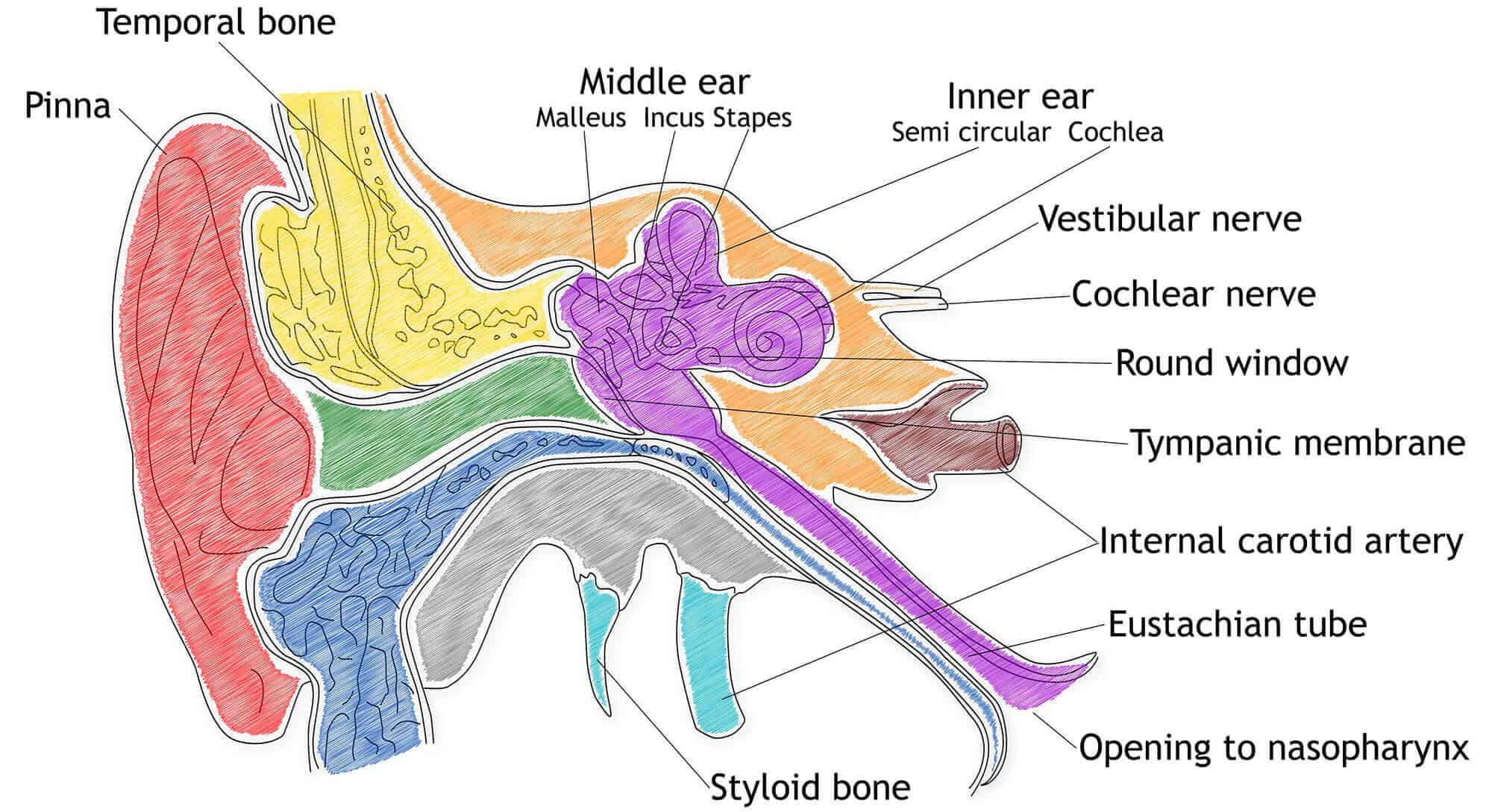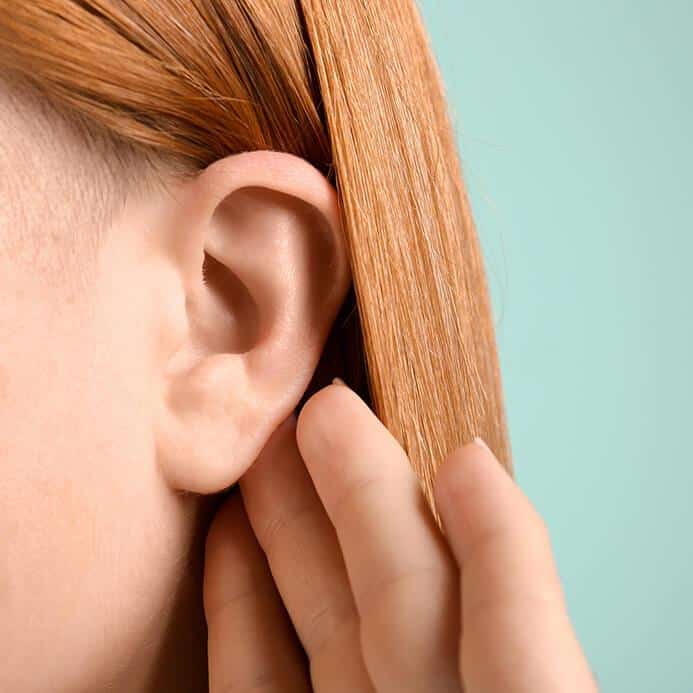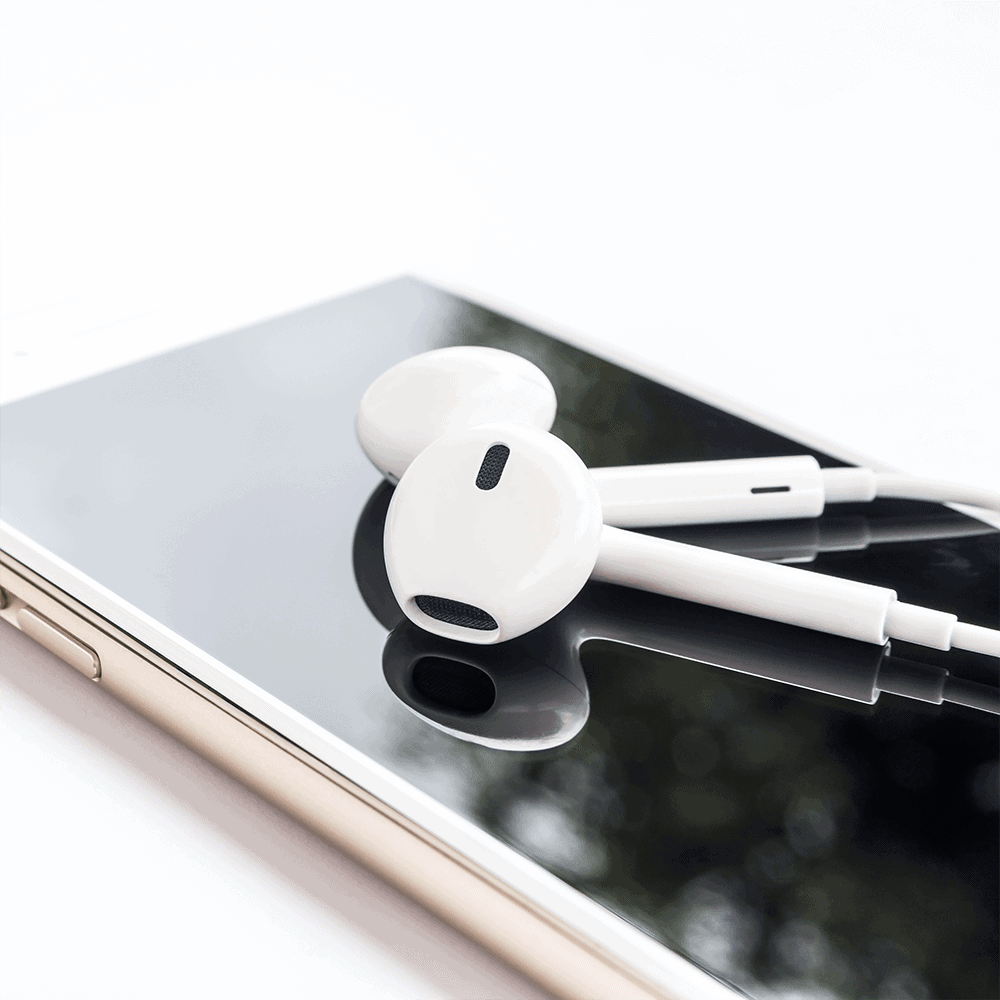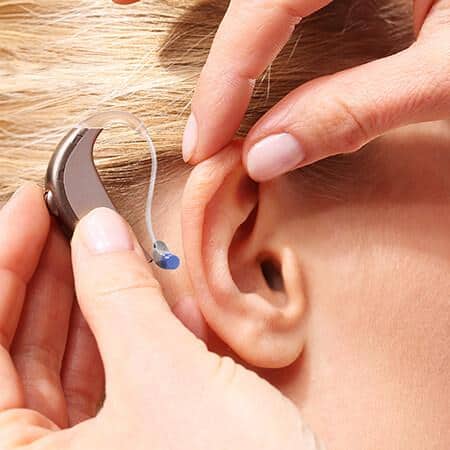Hearing Loss
Hearing loss is defined as a “partial or total inability to hear”. While the definition is simple, actually understanding hearing loss is more complicated. Read through this helpful guide to learn more about the intricacies of hearing loss.

How Healthy Hearing Works
To understand hearing loss, it is important to first understand how healthy hearing works. Our hearing (or auditory) system is one of the most complicated systems in our entire body, and quite a lot must occur before we are able to hear even the simplest of sounds.
This entire process occurs for every single sound we hear, including every letter in every word.
Hearing Loss Facts

Prevalence of Hearing Loss
Hearing loss is the third most common chronic medical condition in US. It is estimated that about 1 in 5 teenagers experience some form of hearing loss in at least one ear, and the prevalence increases with age (1). In fact, the number increases to 1 in 3 for people aged 65-74 and to a whopping 2 in 3 for those 75 and older (2).

Preventable Hearing Loss
While some hearing losses (such as hearing defects at birth or presbycusis) cannot be prevented, there are some forms of completely preventable hearing loss. The most common type of preventable hearing loss is noise-induced hearing loss (NIHL). NIHL is on the rise. The World Health Organization (WHO) estimates that approximately one billion young people are at risk for developing NIHL, most notably due to an increased use of portable listening devices.

Treating Hearing Loss
Studies from around the world have time and time again shown that treating hearing loss improves many aspects of your life. Treating hearing loss with hearing aids has been shown to significantly increase earning potential, decrease risk of depression or social isolation, and greatly improve social and romantic relationships. Hearing aids can also significantly slow rates of cognitive decline - especially for older adults.

